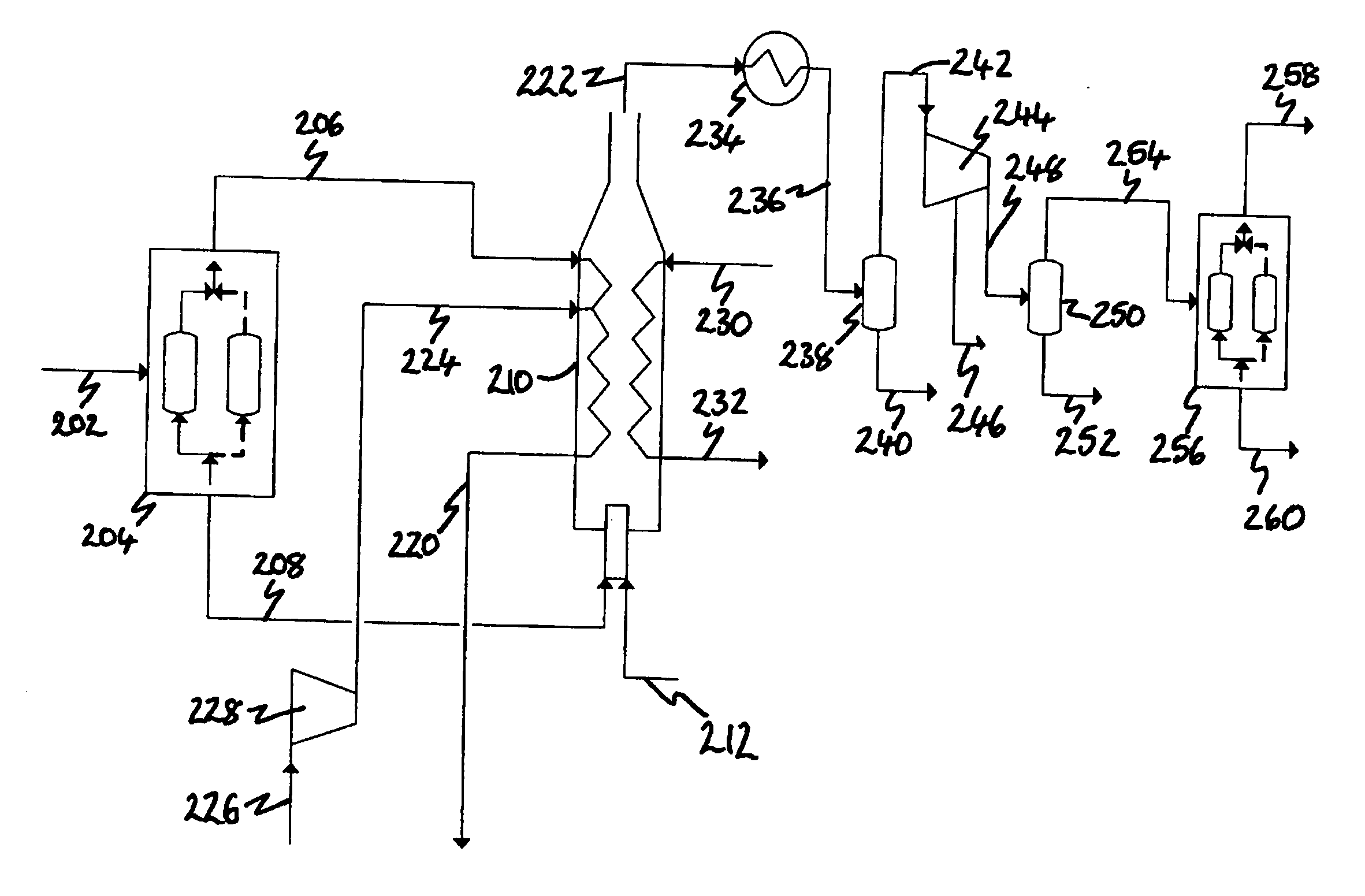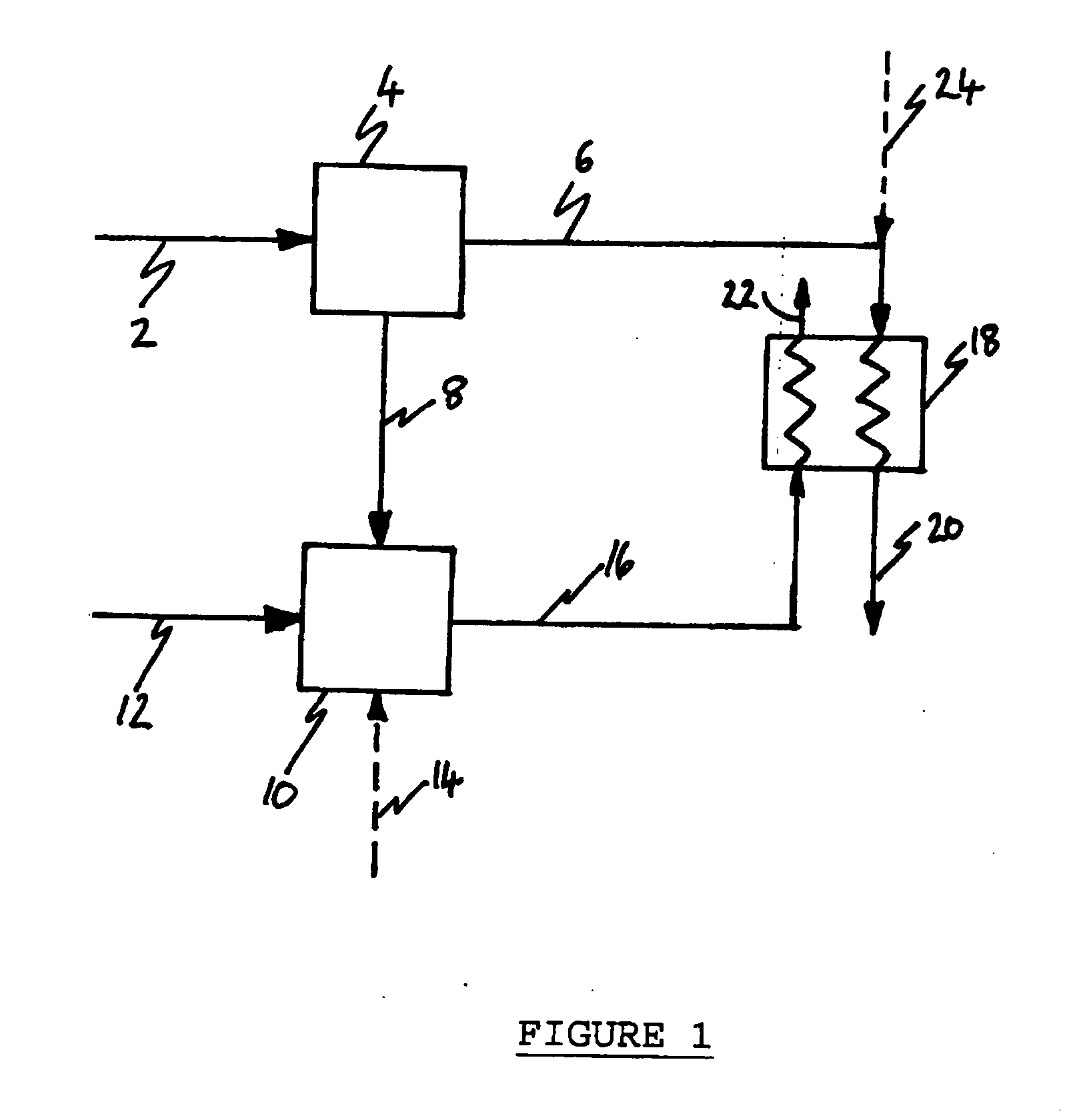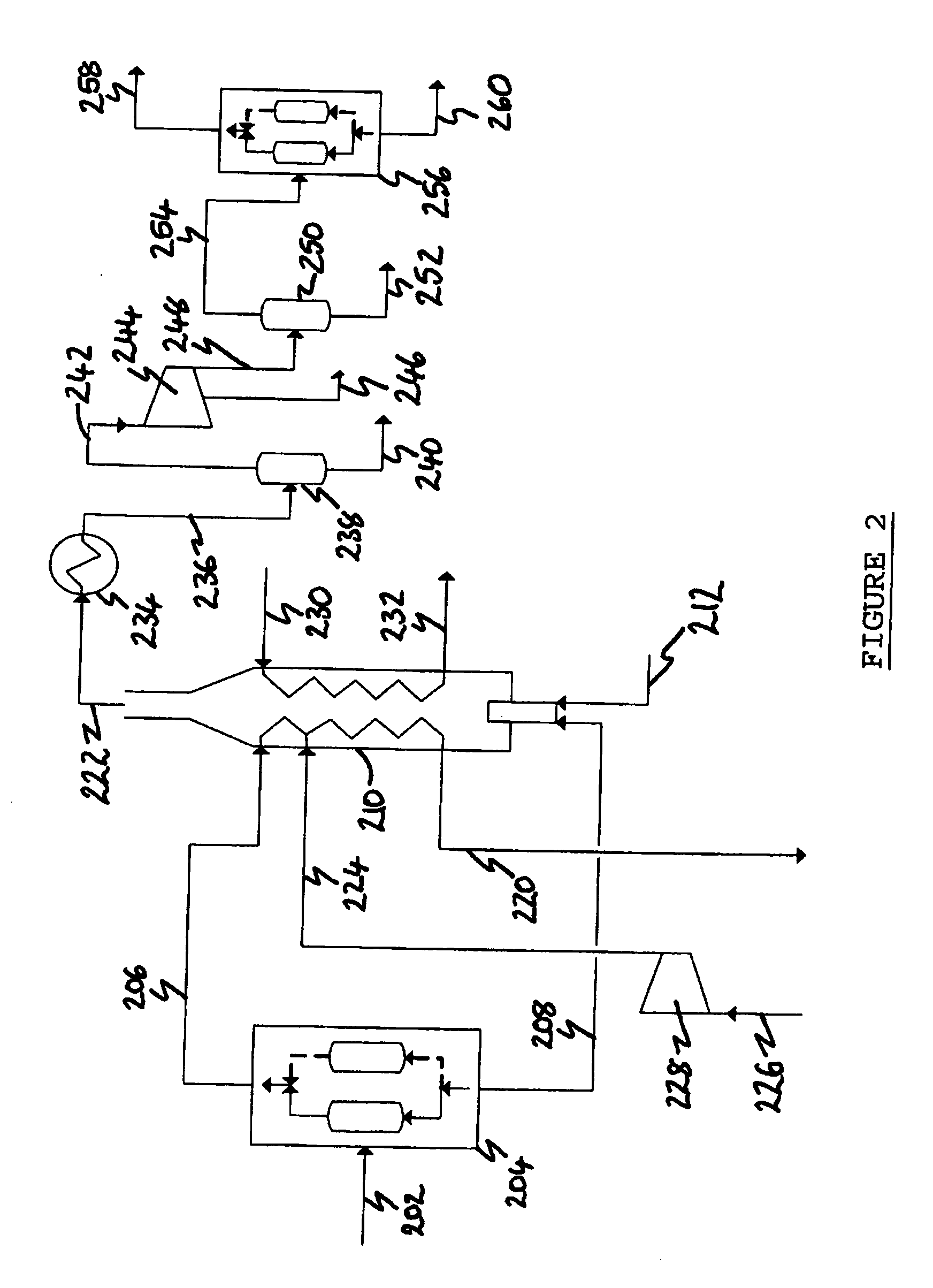Method of treating a gaseous mixture comprising hydrogen and carbon dioxide
a gaseous mixture and carbon dioxide technology, applied in the direction of hydrogen separation using liquid contact, separation process, energy input, etc., can solve the problems of reducing the quantity of low grade heat available, requiring significant utility consumption, and deficits to be made up
- Summary
- Abstract
- Description
- Claims
- Application Information
AI Technical Summary
Benefits of technology
Problems solved by technology
Method used
Image
Examples
example 1
[0201] In Example 1, the computer simulated the arrangement of the process depicted in FIG. 2 in which synthesis gas is produced from natural gas in an ATR (not shown). The synthesis gas is cooled to 40° C. and condensed water removed prior to being fed as stream 202 to the H2 PSA 204 which is operating to produce pure (100 mol. %) H2 at 90 mol. % recovery.
[0202] The results of the simulation in Example 1 are provided in Table I.
TABLE IStream Number202206208226224220212230232222Temperature° C.40.0040.0040.0015.0096.00350.00200.0035.00500.0069.44Pressurebar a27.527.527.5323231.51501501.5Flowkg / s61.256.4254.8393.1693.1699.588.1419.7819.7862.98CompositionH2mol %73.4671100.000021.68480.00000.000049.06760.00000.00000.00000.0000COmol %1.53980.00004.54500.00000.00000.00000.00000.00000.00000.0000CO2mol %24.06610.000071.03410.00000.00000.00000.00000.00000.000074.4275H2Omol %0.30650.00000.90470.00000.00000.00000.0000100.0000100.000023.3702CH4mol %0.22950.00000.67750.00000.00000.00000.00000...
example 2
[0203] The process arrangement simulated in Example 2 is identical to that simulated in Example 1 except that the H2 PSA 204 is optimized for this application. The H2 recovery is increased (to 92 mol. %) and its purity is decreased by designing the PSA to allow some impurities through with the H2. This allows a smaller PSA to be used, and also has the surprising benefit that, in allowing inerts to come through with the hydrogen, higher purity CO2 is produced.
[0204] The results of the simulation in Example 2 are provided in Table II.
TABLE IIStream Number202206208226224220212230232222Temperature° C.40.0040.0040.0015.0096.00350.00200.0035.00500.0067.01Pressurebar a27.527.527.5323231.51501501.5Flowkg / s61.257.3753.8995.5895.58102.956.6711.8311.8360.56CompositionH2mol %73.467199.148618.46500.00000.000048.77120.00000.00000.00000.0000COmol %1.53980.56473.62820.00000.00000.27780.00000.00000.00000.0000CO2mol %24.06610.000075.60850.00000.00000.00000.00000.00000.000077.9807H2Omol %0.30650.00...
example 3
[0205] In Example 3, the computer simulated an alternative arrangement of the process depicted in FIG. 2. In this alternative arrangement, synthesis gas is produced from the gasification of coal in a gasifier (not shown). As in Examples 1 and 2, the synthesis gas is cooled to 40° C. and condensed water removed prior to being fed as stream 202 to the H2 PSA 204. The PSA is operating to produce pure (100 mol. %) H2 at 90 mol. % recovery.
[0206] The synthesis gas will contain H2S which will combust to produce SO2 which can be removed as sulfuric acid in the compression system by the addition of NOx.
[0207] The results of the simulation of Example 3 are provided in Table III.
TABLE IIIStream Number202206208226224220212230232222Temperature° C.40.0040.0040.0015.0096.00350.00200.0035.00500.0058.12Pressurebar a27.527.527.5323231.51501501.5Flowkg / s120.316.05114.2687.6487.6493.689.3823.2123.21123.64CompositionH2mol %55.5876100.000011.12390.00000.000049.08380.00000.00000.00000.0000COmol %1.85...
PUM
| Property | Measurement | Unit |
|---|---|---|
| pressure | aaaaa | aaaaa |
| pipeline pressure | aaaaa | aaaaa |
| temperature | aaaaa | aaaaa |
Abstract
Description
Claims
Application Information
 Login to View More
Login to View More - R&D
- Intellectual Property
- Life Sciences
- Materials
- Tech Scout
- Unparalleled Data Quality
- Higher Quality Content
- 60% Fewer Hallucinations
Browse by: Latest US Patents, China's latest patents, Technical Efficacy Thesaurus, Application Domain, Technology Topic, Popular Technical Reports.
© 2025 PatSnap. All rights reserved.Legal|Privacy policy|Modern Slavery Act Transparency Statement|Sitemap|About US| Contact US: help@patsnap.com



